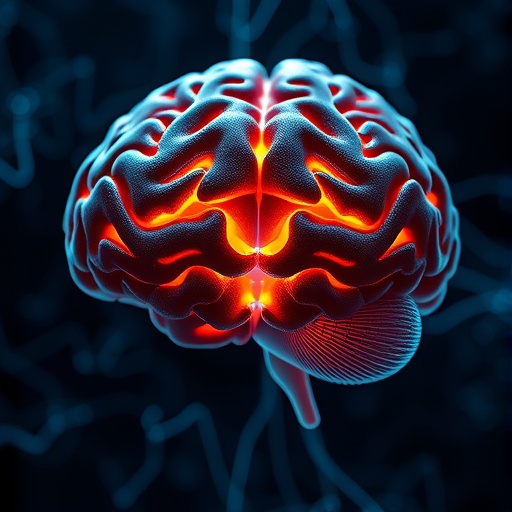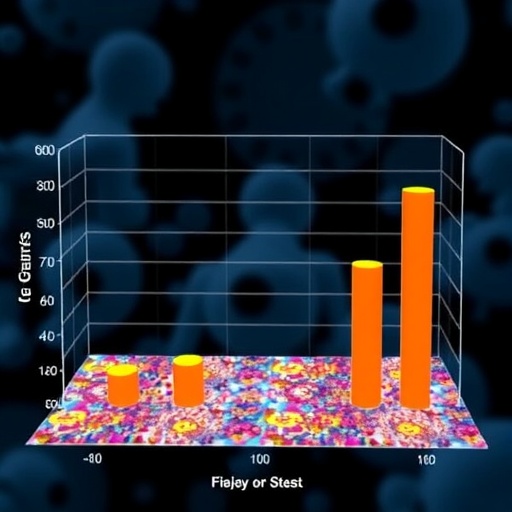In a groundbreaking study that has the potential to reshape our understanding of addiction and gender differences in neural circuitry, researchers have focused their attention on the nucleus accumbens, a critical brain region involved in reward processing. This seminal work, spearheaded by Chan et al., investigates how chemically manipulating neuronal activity in the nucleus accumbens core can influence ethanol reward responses differently in male and female mice. The implications of these findings extend far beyond the lab, opening new avenues for addressing substance use disorders and gender-specific treatment strategies.
At the heart of the research lies the utilization of chemogenetics, an innovative technique that allows for the precise control of neuronal activity. This approach enables scientists to either activate or inhibit specific neurons within the nucleus accumbens, providing intricate details about how these alterations in brain activity can directly affect behavioral outcomes. By employing this method, the researchers aimed to elucidate not only the role of the nucleus accumbens in ethanol preference but also the divergent responses observed in male and female subjects.
Previous studies have indicated that the nucleus accumbens plays a crucial role in addiction, serving as a hub for integrating various neurochemical signals associated with reward. However, gender differences in addiction mechanisms have often been underexplored. Chan and colleagues’ study highlights the necessity of investigating these differences through an experimental lens, paving the way for tailored therapeutic interventions. Their results indicate that while male mice exhibited increased ethanol reward following chemogenetic excitation of the nucleus accumbens core, female mice showed a marked reduction in ethanol preference under similar conditions.
The findings contributed immensely to a nuanced understanding of how gender dynamics influence reward processing within the brain. Male mice, when subjected to chemogenetic activation of the nucleus accumbens, exhibited a heightened inclination towards ethanol consumption. This effect underscores the propensity for increased reward-seeking behavior in males, potentially linked to the larger innate sensitivity to rewards that often characterizes male responses in various behavioral paradigms. It raises fascinating considerations about the biological underpinnings of addiction and how they might manifest differently between sexes.
Conversely, when chemogenetic inhibition techniques were applied to female mice, the results were strikingly opposite. The inhibited activity within the nucleus accumbens core effectively diminished the female mice’s inclination towards ethanol, suggesting that neurotransmitter systems in female subjects may have an inherent protective mechanism against the rewarding effects of alcohol. This distinction in neural response capacity not only provides a more comprehensive framework for understanding addiction but also highlights the critical need for gender considerations in addiction treatment policies.
The research team meticulously designed and executed an array of experiments, utilizing both male and female mice to garner comparative insights. They controlled other variables expertly, ensuring robust results while using the chemogenetic technique to target specific populations of neurons that had previously been linked to reward and aversion pathways. Their careful methodology allows for a thoughtful interpretation of the data, accentuating the importance of innovative approaches in the scientific investigation of behavioral neuroscience.
In addition to the immediate implications for addiction research, Chan et al.’s findings provoke a broader conversation about the interplay of gender biology with neurochemical pathways. While it is well-established that hormone levels contribute to behavioral outcomes, the specific interactions with brain circuitry remain a burgeoning field of study. The differential responses observed in their results suggest that hormonal influences may indeed modulate how strongly or weakly reward-related neuronal circuits operate, ultimately affecting an individual’s vulnerability to substance use.
The remarkable potential of chemogenetic technologies represents just one of many advancements in neuroscientific research methodologies. As these technologies continue to evolve, they facilitate increasingly fine-grained analyses of the brain’s responses to various stimuli. By exploring these networks with unprecedented precision, researchers like Chan and colleagues are moving toward a more thorough understanding of the mechanisms of reward, addiction, and ultimately, recovery.
As discussions about equity in healthcare gain traction, the socio-political implications of this research cannot be overstated. The findings provide anecdotal support for tailoring addiction interventions by factoring in gender-based biological differences. It fosters a dialogue about the need for more comprehensive research that accounts for these variations in treatment approaches, ensuring better outcomes for all individuals battling substance use disorders.
The impact of these findings extends beyond scientific realms; they also shed light on public health policy formulation regarding alcohol consumption and addictive behaviors. With addiction remaining a significant societal concern, the insights gathered from research like this can inform risk reduction strategies and educational programs tailored to respective audiences. By contextualizing findings within the framework of gender differences, public health initiatives may become more effective in addressing addiction through specialized interventions.
Moreover, as the stigma surrounding mental health and substance use continues to diminish, research indicating the biological underpinnings of addiction serves as a powerful narrative for understanding addiction as a complex interplay of physiology and environmental factors. This understanding enhances empathy towards those experiencing addiction and will likely spark further inquiry into how social systems can better support individuals struggling with these issues.
Looking forward, Chan et al.’s research raises many unanswered questions—most notably, how might these findings apply to human populations? While animal models provide invaluable insights, extrapolating the data to clinical scenarios involving humans remains an intricate challenge. The relationship between chemogenetic alterations in the nucleus accumbens and their direct correlation with human neurotransmitter systems and behavioral responses warrants further exploration.
In conclusion, the pioneering work conducted by Chan and colleagues represents a critical leap forward in understanding gender differences in addiction. Their innovative use of chemogenetic techniques to manipulate the nucleus accumbens core has illuminated the disparate ways that males and females respond to ethanol reward. As the scientific community continues to build on this knowledge, it opens the door to more personalized and effective treatment strategies for addiction, ultimately fostering a healthier society equipped to combat the challenges of substance misuse.
Subject of Research: Investigating gender differences in ethanol reward using chemogenetic manipulation in the nucleus accumbens.
Article Title: Nucleus accumbens core chemogenetic excitation in male mice and chemogenetic inhibition in female mice reduced ethanol reward.
Article References:
Chan, A.E., Driscoll, G.S., Usmani, Z. et al. Nucleus accumbens core chemogenetic excitation in male mice and chemogenetic inhibition in female mice reduced ethanol reward. Biol Sex Differ 16, 66 (2025). https://doi.org/10.1186/s13293-025-00745-0
Image Credits: AI Generated
DOI:
Keywords: Chemogenetics, nucleus accumbens, ethanol reward, gender differences, addiction research.
Tags: addiction research and implicationsbehavioral outcomes in addictionbrain circuitry and reward processingchemogenetics in neuroscienceethanol preference in male and female micegender differences in addictiongender-specific treatment strategiesinnovative techniques in addiction researchneurochemical signals in addictionneuronal activity manipulationnucleus accumbens and ethanol rewardsex-specific substance use disorders





